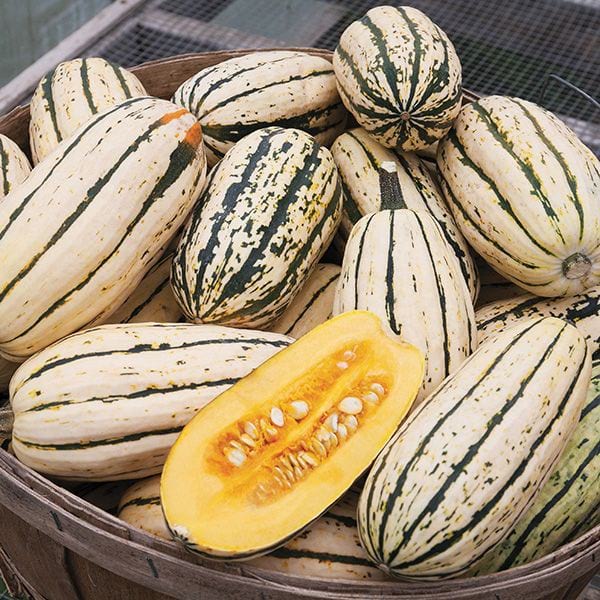

Plant seeds outdoors after the last threat of frost has passed. With the modern disease-resistant cultivar, growing your own from seed is easy. Growing Your Own Delicata Squashĭelicata squash is typically grown in the summer season and harvested in the fall. But unlike most winter squash varieties, this squash is not as rich in beta-carotene.

It’s a good source of potassium and dietary fiber, and contains magnesium, manganese, and vitamins C and B. Not only is delicata squash pretty to look at, but it’s also nutritious. In the early 2000s, Cornell University’s Department of Plant Breeding* bred an open-pollinated, non-hybrid variety resistant to typical squash diseases, and their results provided commercial food growers and markets with a hearty cultivar. since the 1890s so why haven’t we heard of this squash before? Delicata squash was highly prone to mildew diseases, and after the Great Depression, this variety seemed to be nonexistent. Seeds for growing this variety have been available in the U.S. To prepare, slice it in half, and scoop out the seeds (which can be roasted just like pumpkin seeds). And it’s incredibly versatile-it can be stuffed and baked, steamed, oven roasted, microwaved, or sautéed. The creamy yellow flesh is wonderfully sweet, so you don’t need to add much to enjoy it. For creamy, evenly browned, flavor-packed delicata squash, roast in butter every time.Although it’s considered a winter squash, it is in the same family as yellow summer squash and zucchini.īut even if it requires no peeling, it has to be tasty, right? Delicata is not only attractive on your harvest table but it’s so delicious as well.
#DELICATA SQUASH SKIN#
I found the brittle skin that resulted from the oil batches to be unappealing. While the oil-coated squash slices seemed a little slick after roasting and cooling, the squash slices seemed to absorb the butter as they sat outside of the oven, which made the interior of the butter-roasted squash creamier and the exterior slightly softer. Since you want all the fat for flavor and texture, superior cling is a butter asset. The butter brought out the sweet and nutty notes of the delicata better than any other fat tested, and coated the slices better than the oils every time I coated squash slices with oil, a small pool of fat inevitably formed and remained at the bottom of the bowl. All of these iterations browned, but the flavor differences were remarkable. I tossed separate batches of delicata squash slices in canola oil, olive oil, refined coconut oil (melted), and melted butter before roasting them off. The Best Fat for Roasting Delicata Squash
#DELICATA SQUASH HOW TO#
Here’s more on how to treat delicata, as well as my favorite method for roasting it. Whether you slice it, dice it, or stuff the halves, it roasts up sweet and tender. Though delicatas vary in weight, they tend to be manageably sized, and are easily dispatched with the average chef’s knife. Its shape is straightforwardly oblong and its green and white striated skin is thin and edible, which means it doesn't need to be peeled. While some winter squashes can be tricky to wrangle (kabocha) or cut up ( butternut) or peel (the groovy acorn), working with delicata squash is a stroll down easy street. Roasting the squash slices in butter, rather than olive, coconut, or vegetable oil, accentuates more of the sweet and nutty flavor notes of the delicata, while also contributing to a creamier interior texture.To promote even browning, arrange the slices around the perimeter of the baking sheet and rotate the sheet halfway through cooking.To get great browning, the squash slices need ample room on the baking sheet if they're crowded together, they'll steam instead of caramelize.


 0 kommentar(er)
0 kommentar(er)
